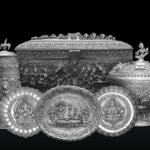November 1, 2025
Unique Story Concepts & Storytelling Ideas
Creative filmmaking ideas can stem from unique storytelling techniques and unconventional concepts that challenge traditional norms.

- A Day in the Life (with a twist): Document one day in the life of a character with a unique circumstance, such as the first human on Mars, or a person who wakes up with a different superpower every day.
- Voiceless World: Tell an entire story where characters cannot speak verbally, relying on visual language, body expression, and sound design to convey emotions and drive the plot.
- The Found Object: Base the narrative around a mysterious object (a key, an old camera that takes pictures of the future, an antique mirror showing disturbing reflections) and the character’s journey to understand its significance.
- Perspective Shift: Tell a story from an unconventional point of view, such as that of an everyday object (a smartphone, a pencil) or an AI robot developing human emotions.
- Memory Lane: Use old family photos or videos as a starting point to craft a narrative or documentary about a specific family history or shared memory.
- Flipping Tropes: Take a familiar genre setup, like horror, and subvert audience expectations with irony or an unexpected, even comical, twist.
- The Last Oasis: Set a story in a post-apocalyptic world where characters struggle to survive, focusing on themes of hope and resilience with minimal locations, like a local park transformed into a wasteland using creative angles and color grading.
Innovative Filmmaking Techniques
- One Continuous Shot: Challenge yourself to film the entire short in one unbroken, continuous shot (a long take). This requires careful planning and precision in choreography and camera movement.
- POV Filming: Immerse the audience by using a first-person point-of-view camera (e.g., a camera mounted on the actor’s body), ideal for action, horror, or conveying a character’s disorientation.
- Creative Constraints: Limit your resources (e.g., use only one location, no dialogue, one actor, natural light) to force creative problem-solving and focus on strong visual storytelling.
- Non-Linear Narrative: Experiment with non-linear timelines, disjointed scenes, or the juxtaposition of contrasting images to create a unique viewing experience and evoke thought.
- Split Diopter: Use a split diopter filter to have two different subjects at vastly different distances from the camera both in sharp focus within the same frame, a unique visual technique for layering information.
- Sound as Storyteller: Remove dialogue and rely on an immersive soundscape or a recurring musical theme (leitmotif) to guide the audience through the story and build atmosphere.
- Mixing Formats: Combine different camera types, such as professional gear and smartphone footage, or blend animation with live-action to create a unique visual style.
- Breaking the Fourth Wall: Have a character directly address the audience, blurring the lines between fiction and reality and allowing for a deeper understanding of their inner thoughts or motivations.










